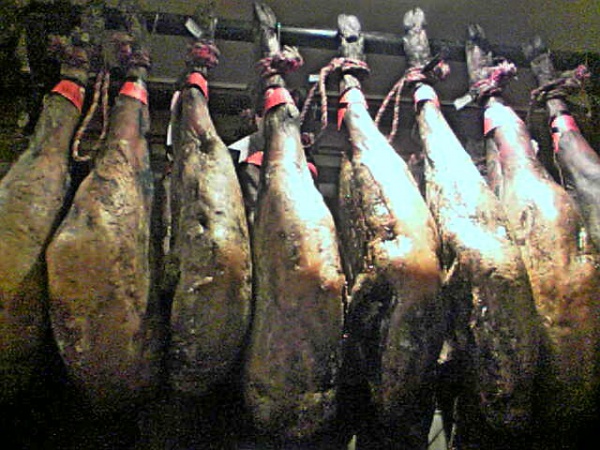Facts About Jamón ibérico
Jamón Ibérico, or "Iberian ham" is a delectable cured ham originating from Spain and Portugal. In Portugal, it is often referred to as "presunto ibérico." This exquisite ham is produced from Black Iberian pigs and is renowned for its smooth texture, rich flavor, and higher fat content compared to the more common jamón serrano.
The creation of Jamón Ibérico is a unique and meticulous process. It begins with Black Iberian pigs being initially fattened on barley and maize. Subsequently, they are allowed to roam freely, feasting on acorns, chestnuts, and roots. This natural diet and free-range lifestyle are crucial to the ham’s distinctive taste. Following this, the ham undergoes an extensive curing process to develop its signature flavor.
Jamón Ibérico is categorized based on the pigs' diet and the extent of their Iberian ancestry. The highest grade, "jamón ibérico de bellota" comes from pigs that have grazed in oak forests and subsisted solely on acorns. Other grades include "cebo de campo" and "de cebo" reflecting variations in the pigs' diet.
The term "pata negra" which originally referred to the Black Iberian breed, is now specifically reserved for acorn-fed, purebred Black Iberian pork due to recent regulations.
Both Spain and the European Union have established regulatory bodies to recognize and protect distinguished producers of Ibérico ham. Some of these designations include D.O.P. Guijuelo, D.O.P. Jabugo, D.O.P. Dehesa de Extremadura, and D.O.P. Los Pedroches. Given its status as a delicacy, the popularity of Ibérico ham is increasing worldwide, leading to higher prices due to its limited production.
In the United States, Ibérico ham became available for export in 2005, with the first shipments reaching the market in 2007. Due to its high demand and limited supply, consumers should be vigilant to avoid counterfeit products when purchasing authentic Ibérico ham.

 Spain
Spain